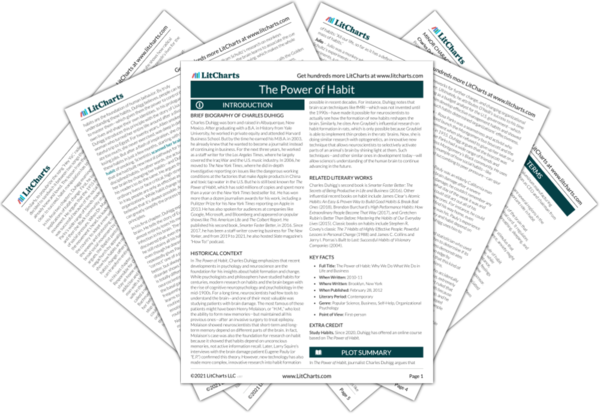Keeping a food log is much less daunting and more sustainable than changing all of one’s health habits at once. Namely, the food log requires people to build one more, relatively straightforward habit into their lives. But total, instant transformation requires them to
stop all of their existing habit loops. This requires a superhuman amount of effort, particularly because—as Duhigg explained in the prologue—it’s impossible to ever
eliminate habits from the brain (only to replace them with new ones).


